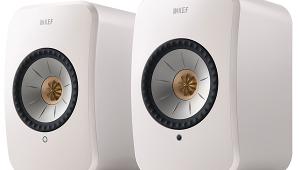Review: Sonos Play:3

The CD is dying. iPod sales are declining. More and more, people are getting their music from … well, everywhere: MP3s stored on a hard drive, Internet radio and music services like MOG, Pandora and the recently hyped Spotify. Problem is, we tend to get this stuff through our computers and smartphones, and too often the music never gets from those devices to a decent sound system.
Sonos aims to solve this problem with the new Play:3, a compact music system that packs all the technology Sonos has developed since its 2003 debut into a device similar in size and form factor to the ultrapopular Bose Wave Music System. You won’t find any inputs or outputs on the Play:3, except for an Ethernet jack on the back. It pulls music either from the hard drives and computers connected to your home network or from its own Internet connection, which can be wired or wireless. You control it through a free app running on your iPhone, iPad, iPod touch or Droid, or through the $349 Sonos Control.
The Play:3 sells for $299, just under what many consider the “magic price point” of $300 required for a consumer electronics product to have a chance at going mainstream. For a $299 device, it’s packed with technology, including an internal 366 MHz computer, three digital amplifiers, two 3-inch midrange drivers, a ¾-inch tweeter and a 3 x 4½-inch passive radiator for bass reinforcement.
The basic design of the Play:3 emerged from Sonos’ speaker engineering team, which includes ex-Velodyne and Boston Acoustics guys. From there, they tweaked the sound by using some of the digital audio processing power of the onboard computer. One really cool engineering twist I have to share: They used the internal circuit board as a brace to damp enclosure vibration.
But what’s really cool about Play:3 is its versatility. Place it horizontally and the midranges run in stereo. Place it vertically and the midranges automatically switch to mono—because you wouldn’t want the stereo soundstage running up and down, right?—and a slightly different EQ curve kicks in. Add a second Play:3, make one little change in the app on your smartphone, and you can run the two in stereo, with one Play:3 as the left speaker and the other as the right.
You can set up a whole houseful of Play:3s (in conjunction with other Sonos products like the larger Play:5, if you wish) just by plopping them down and pushing two buttons to make them connect to the Sonos network. You can give each unit whatever name you want, like Kitchen, Living Room, etc., and run them all off a single smartphone or tablet.
Setup? What setup?
I’ve used a ton of networked audio products, but the Play:3 is the most user-friendly I’ve encountered. Sonos gear streams audio on its own wireless network, not your WiFi network, although you do have to use your WiFi network for your phone or tablet to communicate with the Sonos products. One Sonos product has to have a wired connection into your network router; if that’s not convenient, you’ll have to add the $49 Bridge. The rest can run wireless.
The Bridge comes with a software CD, which has a simple setup routine. Basically, you tell it you’re going to add a Sonos device, then you go hit two buttons on the device and you’re done. I set up a two-zone system in about 10 minutes, and that’s without ever having set up a Sonos system before.
Once I downloaded the Sonos app to my Motorola Droid Pro smartphone, I was ready to play.
- Log in or register to post comments






























































